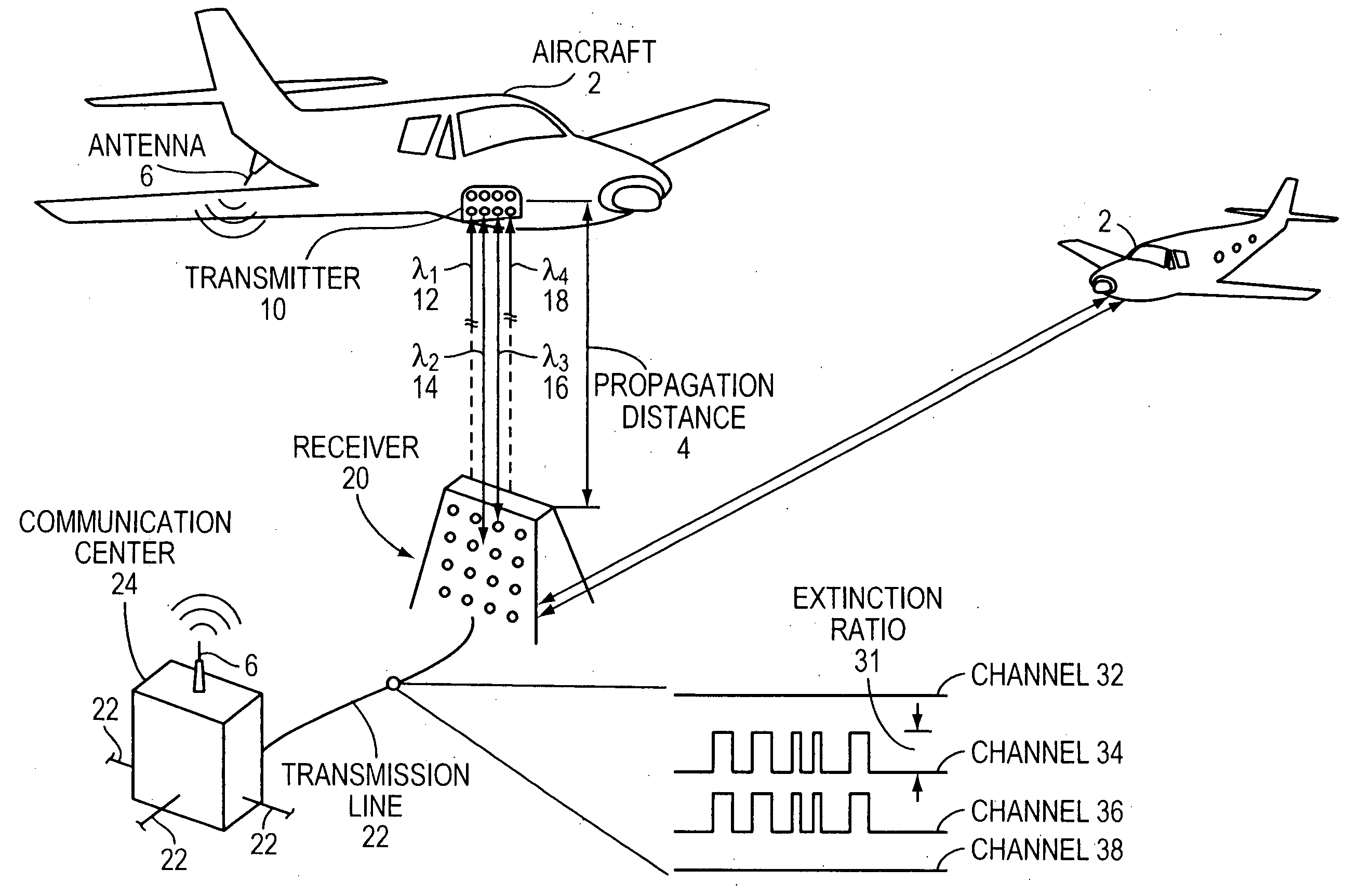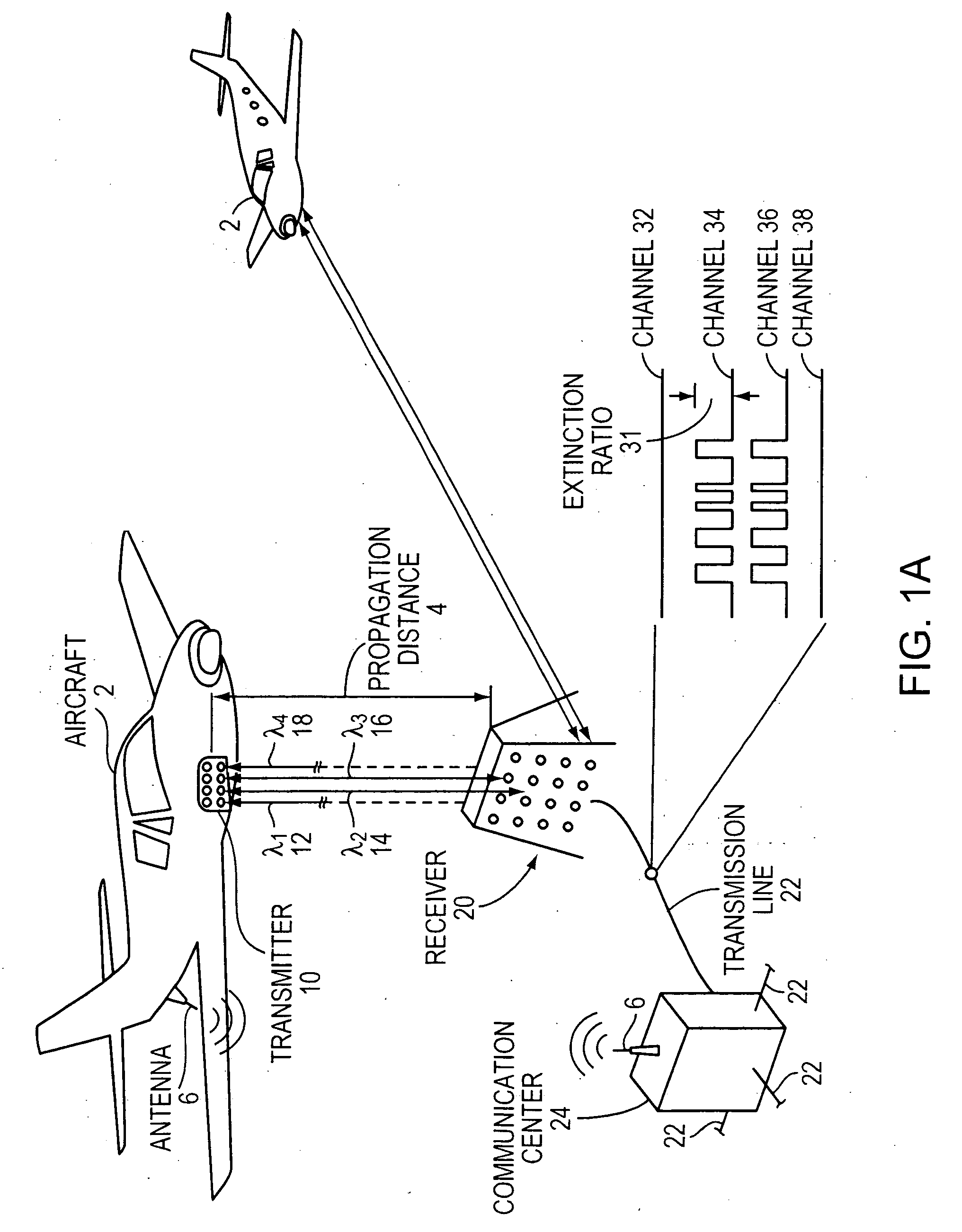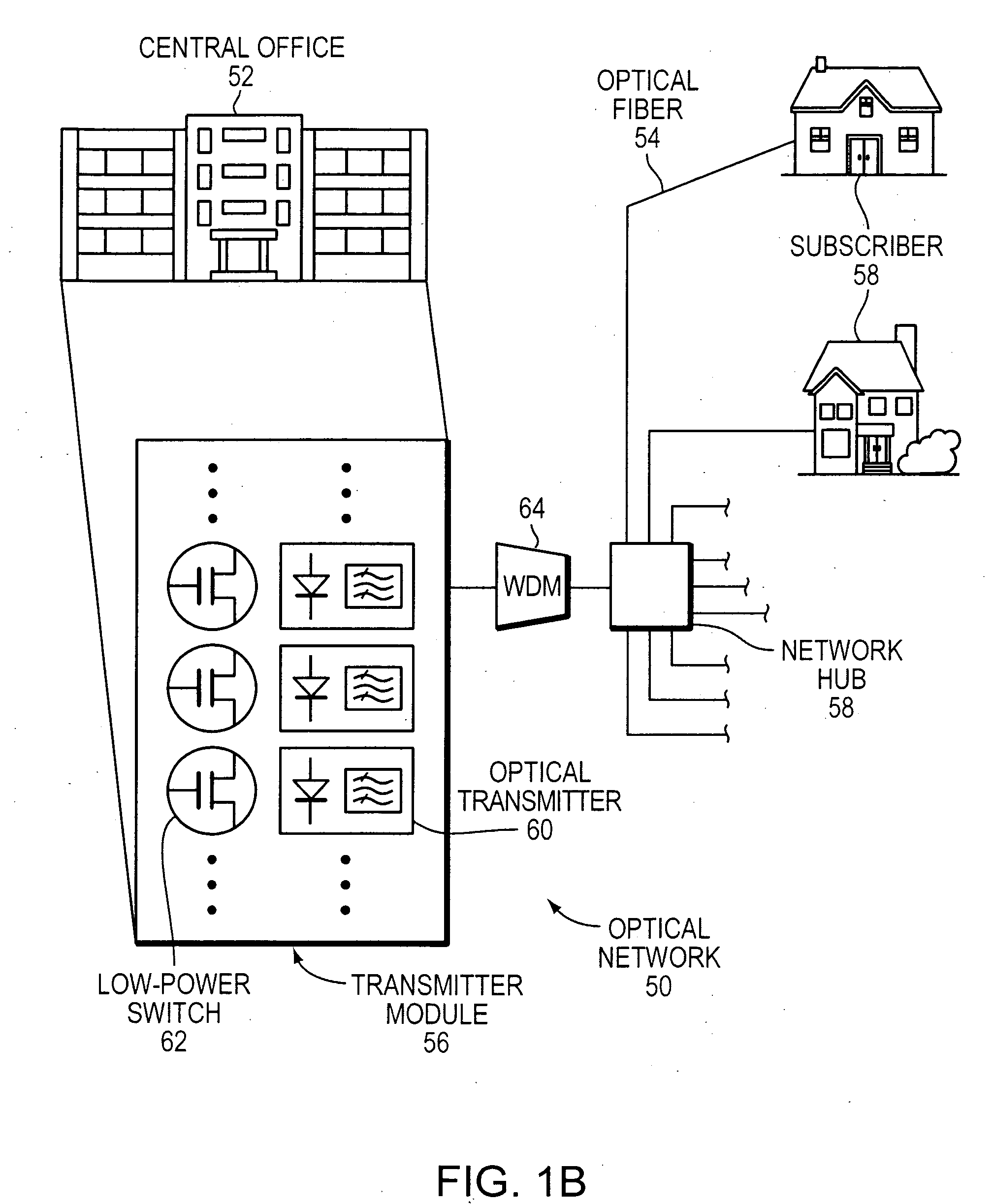Method and apparatus for transmitting optical signals
a technology of optical signals and optical signals, applied in the direction of electrical equipment, electromagnetic transmission, transmission, etc., can solve the problems of affecting both time-division multiplication and incomplete er, affecting the sensitivity of optically preamplified receivers, and all suffer from speed, er, and/or power efficiency limitations
- Summary
- Abstract
- Description
- Claims
- Application Information
AI Technical Summary
Benefits of technology
Problems solved by technology
Method used
Image
Examples
example embodiments
2 Advantages of Example Embodiments
[0051]Example embodiments of the present invention provides an improved low-power means of generating high-fidelity, intensity-modulated or wavelength-switched optical signals compatible with good receiver sensitivities. Replacing a conventional continuous-wave (CW) laser and external modulation with filter-based modulation achieves the same or better performance without requiring high-fidelity low-noise input signals. This enables standard low-power and potentially noisy logic gates to be used to directly drive the optical transmitter without significant loss of waveform fidelity or ER.
[0052]Increased modulation extinction and stability, and reduced complexity, enable more sophisticated modulation while reducing size, weight, and power (SWAP), and component count, especially when implemented with scaleable implementations in the transmitter and receiver. This, in turn, improves overall reliability. Embodiments of the present invention are particul...
PUM
 Login to View More
Login to View More Abstract
Description
Claims
Application Information
 Login to View More
Login to View More - R&D
- Intellectual Property
- Life Sciences
- Materials
- Tech Scout
- Unparalleled Data Quality
- Higher Quality Content
- 60% Fewer Hallucinations
Browse by: Latest US Patents, China's latest patents, Technical Efficacy Thesaurus, Application Domain, Technology Topic, Popular Technical Reports.
© 2025 PatSnap. All rights reserved.Legal|Privacy policy|Modern Slavery Act Transparency Statement|Sitemap|About US| Contact US: help@patsnap.com



